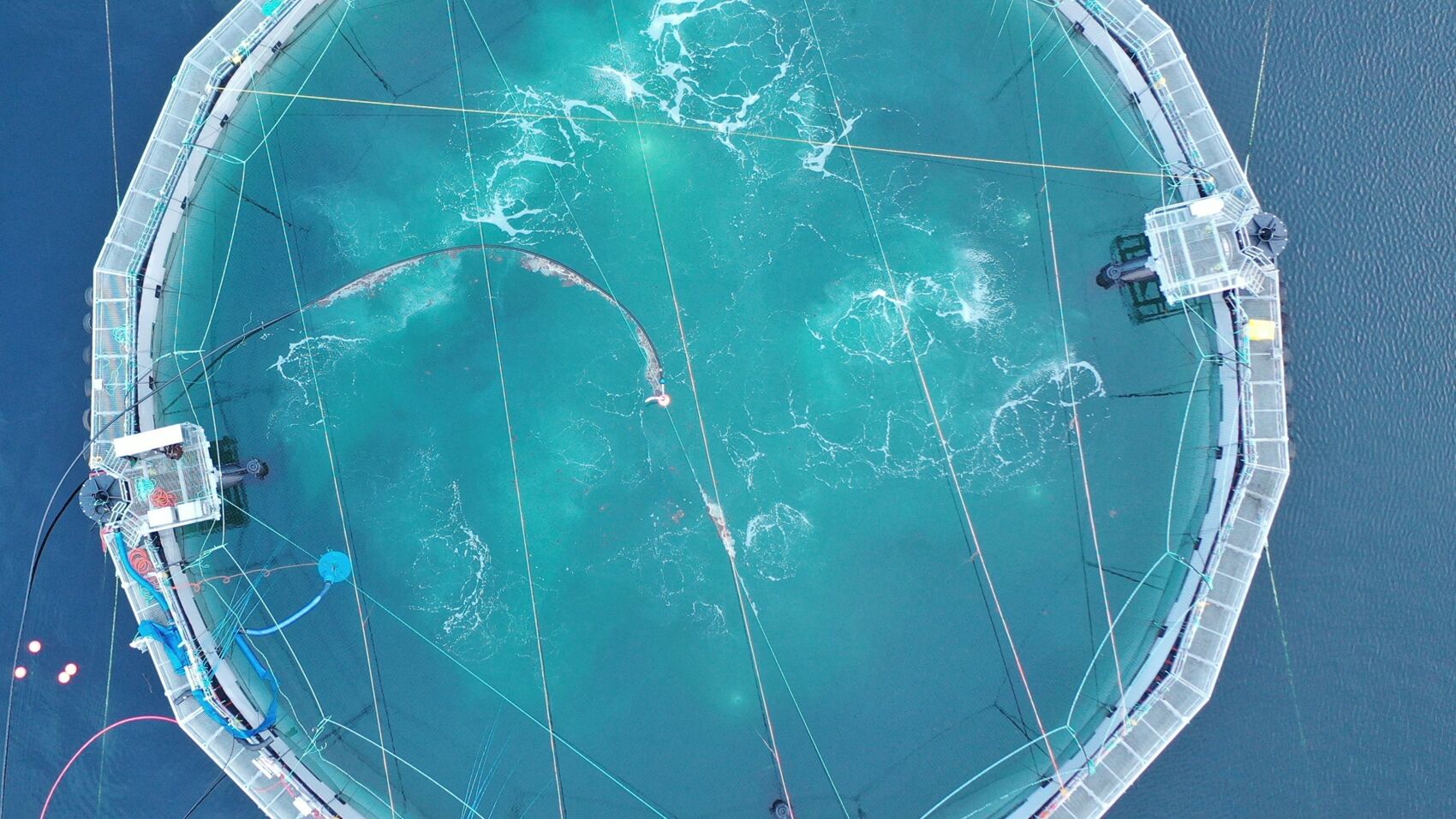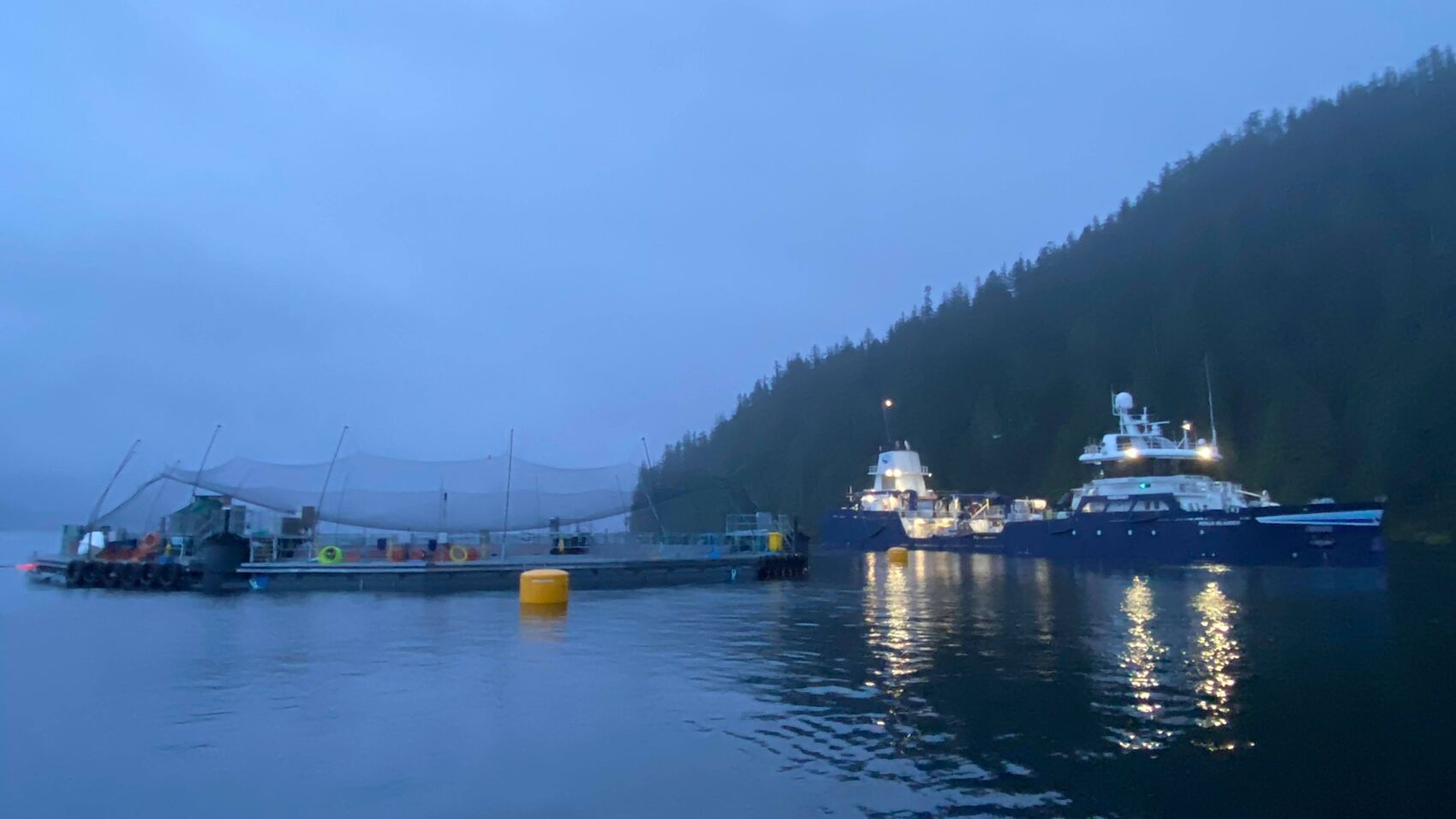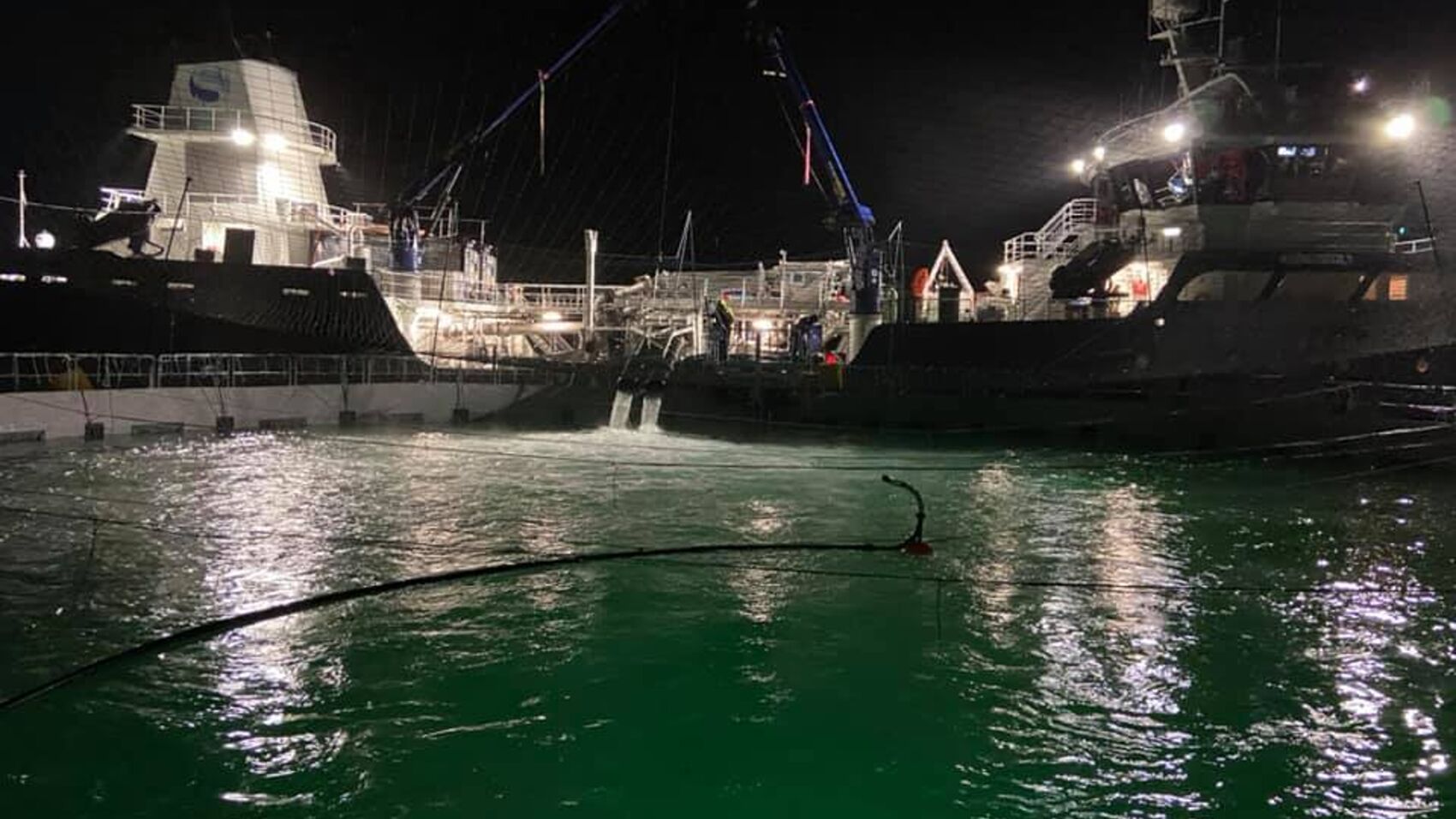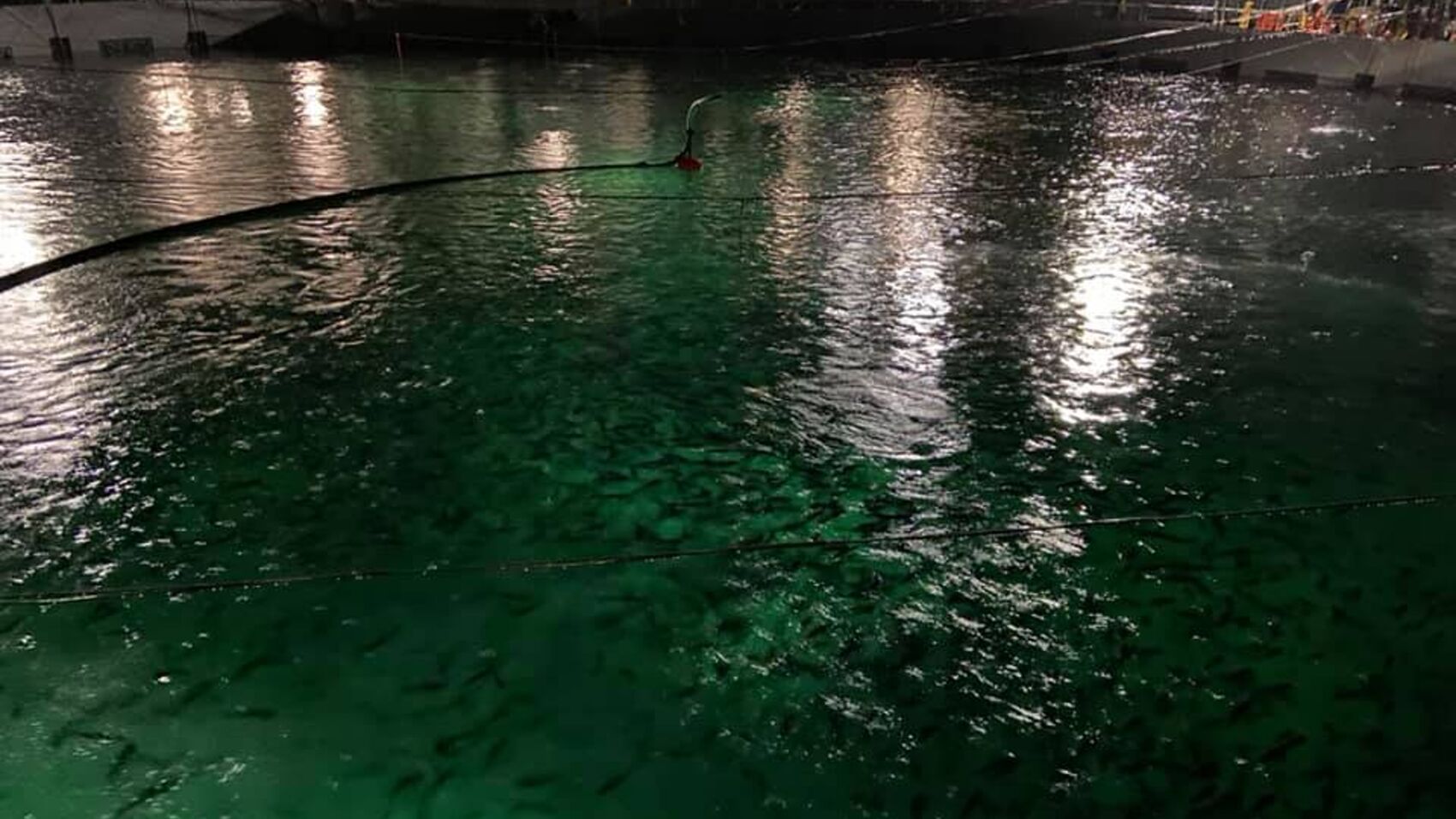News
08.12.2020
Cermaq Canada launches trial of new innovative system in BC waters
Campbell River – The trial of the new Semi-Closed Containment System (SCCS) is officially underway with the successful stocking of young salmon, called smolts. The system is unique as it uses a patented material to form a barrier around the system, which eliminates lateral interaction between wild and farmed salmon, while providing additional benefits for the farmed populations. The SCCS trial is the first of its kind in Canada – but the system has been successfully trialed in Norwegian waters by Cermaq Norway.

“We are excited about the start of the trial for several reasons. The first is the potential benefits for salmon, as trials in Norway have shown us that the system essentially eliminates the transfer of lice from wild salmon to our farmed populations. We are also excited to see how the farmed populations perform in the system in Canadian waters. In Norway, we have seen our fish grow faster and have better overall performance,” says David Kiemele, Managing Director, Cermaq Canada. “The system is moored at our Millar Channel farm site which is located in Ahousaht Nation territory, and we feel the weight of this responsibility. We are committed to ongoing improvements to our operations through opportunities just like this, including the testing of new technology and looking at how our fish interact with the environment around them.”
The goal of the pilot trial is to determine the feasibility of the system in Canadian waters, as well as analyze the performance of fish within the system as compared to control groups of fish which have been stocked in the adjacent, traditional pen system.
“We know the system is performing well in Norwegian waters, but we need to see how it performs in Pacific waters. Our waters are different for several reasons – including differing biodiversity, warmer temperatures and varying biophysical properties. We also have different fish welfare concerns – many of which we are hopeful the system will help to mitigate. The system has been adapted to our local waters by using four deep-water intakes to draw water into the system from depths between 22 and 27 metres. The hope is that this will potentially eliminate harmful algae and sea lice from entering the system. Overall, this technology gives us a greater ability to control water quality within the system,” says Brock Thomson, Innovation Director, Cermaq Canada and Project Director for the SCCS trial. “We are also investigating the feasibility of using this technology as smolt entry sites – or nurseries. We know that the transition from the freshwater environment to our ocean farms can be stressful for fish, and that smaller fish can be more susceptible to naturally occurring environmental challenges in the ocean environment. By using the SCCS as an entry site, we may be able to reduce stress and minimize exposure for smolts, helping to improve overall fish performance and welfare.”
The trial will run until the summer of 2022, when fish are harvested from the site. During this trial period, there will be the initial group of control fish who will spend their life in the traditional farm system. Cermaq Canada will also be transferring fish from the SCCS at two pre-determined growth targets into the adjacent traditional net-pen system to test performance and influence of the system.
Semi-Closed Containment System (SCCS) trial, timeline and quick facts:
• The SCCS has been approved for trial at our Millar Channel farm site, where the new system is moored adjacent to our traditional farm system which allows for side-by-side controls.
• Two pens in the traditional Millar Channel farm open-net farm system has been stocked with a total number of smolts of just over 233,000 fish all of which weigh approximately 100 grams (about 20 cm in length). These smolts will spend their life in the traditional system and will be the main control group against which we measure growth and performance of fish in and from the SCCS.
• The SCCS has been stocked with 495,000 smolts, also approximately 100 grams in size.
• There will be two transfers of fish from the SCCS and into the adjacent traditional farm system during the pilot trial.
• The transfer of fish at both 600 grams and 1.5 kilograms will demonstrate the effectiveness of the system as a nursery, or initial transfer site (called a post-smolt facility) and better demonstrate the direct impact the system has on fish development and health.
• A smaller group of fish will be left in the system through to harvest.
• As the fish are transferred out of the SCCS, they will be placed in separate pens, so the control groups remain together so ongoing performance compared to those fish remaining in the SCCS can be continued.
• It is anticipated that the fish will reach harvest size (5.5 kg) in the spring and summer 2022.
• As results begin to be recorded comparing the performance of the different control groups, information will be shared publicly.
Semi-closed containment system timeline and quick facts:
• Cermaq Canada has purchased the SCCS from FiiZK, a Norwegian-based organization which has been developing and delivering innovative new systems to the aquaculture industry since 2010.
• The SCCS uses a large, water-pressurized bag system which is made of a flexible polymer material that sits outside of the traditional netting system – creating an impenetrable barrier between the open ocean and the inside of the pen.
• Water is pumped into the salmon pen through four sea water intakes that are capable of pumping 300 cubic metres of water per minute, which allows for the creation of constant water circulation through the 13 deep-level ports.
• As the lining maintains constant water pressure and movement thanks to the intake pumps and the lower level ports, there is no risk of the bag “deflating”.
• The system will be the first of its kind in Canada after showing promising results in Cermaq Norway where two groups of salmon, reaching up to one kilogram have been trialed.
• Once pumped into the system through the screened intakes, water exchanges within the system in approximately 50 minutes.
• The tensile strength of the system is strong – at 1300/1300 daN/5cm – and can easily withstand storm activity and predator attacks.
-30-
For more information, please contact Cermaq Communications and Engagement Manager, Amy Jonsson at 250-202-7680, or by email at amy.jonsson@cermaq.com.


